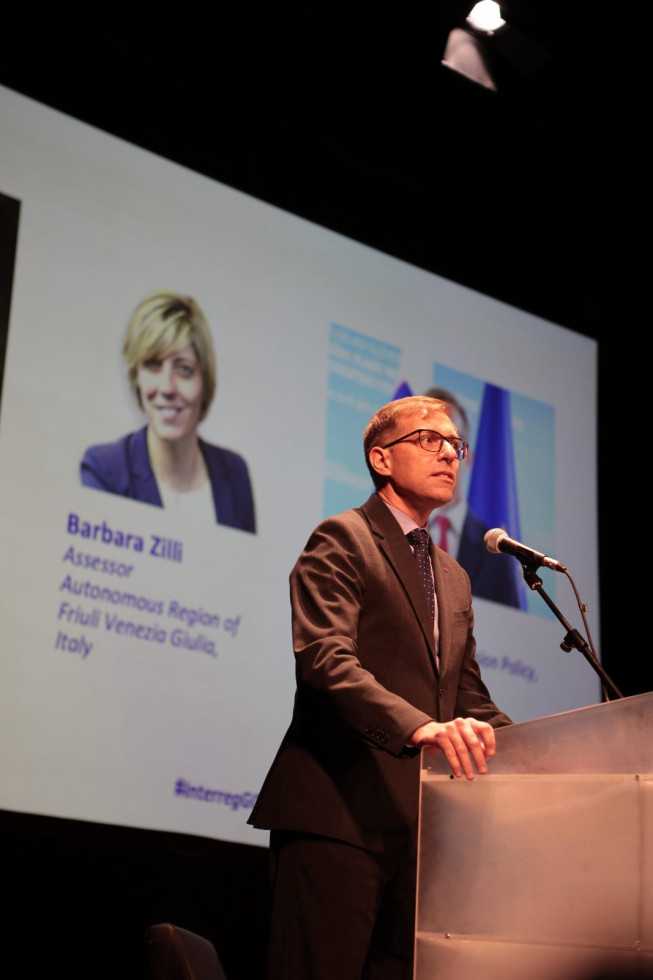Koprivc: More cooperation means more Europe

State Secretary mag. Marko Koprivc delivering his address at the Interreg GO! event | Author Ministry of Cohesion and Regional Development
Regardless of the implementation model we choose in the future, we should keep the fundamental principles of Cohesion Policy and all the key features of Interreg programmes, including their cross-border nature, partnership, involvement of local communities, and adaptability to local needs.
State Secretary Koprivc underlined that we should be pleased with our experience so far. However, the future brings new challenges, calling for more thematic flexibility already in the programming phase to better respond to the specific needs of the regions.
Slovenia also supports strengthening the role of Interreg and improving the inclusion of macro-regional content into national and European policies and programmes. “We believe that this is not only a matter of integration, but also of greater resilience, security and solidarity.”
“More cooperation means more Europe. It also means more opportunities for people, more knowledge and trust – and more solutions that we develop together,” concluded Koprivc.
State Secretary Koprivc also met bilaterally with Jan Szyszko, the Polish State Secretary for Cohesion. They discussed Cohesion Policy, its role, importance and future challenges.
For 35 years, Interreg programmes have been at the cornerstone of European integration, promoting cross-border, international, and interregional cooperation, as well as cooperation among outermost regions, to foster growth, innovation, and integration in all European regions. Interreg programmes are recognised as a key tool for strengthening solidarity, trust and mutual understanding along the EU’s internal and external borders.

